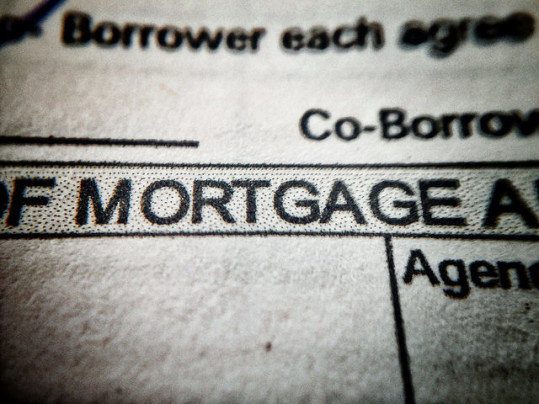According to the Mortgage Bankers Association’s Weekly Applications Survey, average mortgage rates dropped last week. The decline moved rates lower than they were at the same time last year. It also led to an increase in demand for mortgage loan applications. In fact, refinance activity was up 9 percent and purchase activity was up 2 percent. Mike Fratantoni, MBA’s chief economist, told CNBC the rebound was significant. “The refinance share is at its highest level since September,” Fratantoni said. “Purchase volume continues to be supported by a strengthening job market.” Despite expectations that rates would move higher this year, they’ve stayed relatively low – after a spike following last year’s presidential election. Next year, analysts expect higher rates again, though new economic policy may mean interest rates will be hard to forecast. Overall, average mortgage rates have remained historically low for several years now and are still well below what has typically been considered normal. The MBA’s weekly survey has been conducted since 1990 and covers 75 percent of all retail residential mortgage applications. More here.
Archive for December 2017
Are Home Price Increases Beginning To Slow?
Home prices have been increasing for some time now. Largely this is because, in many markets, there are more interested buyers than there are homes available for sale. Inventory shortages can cause more competition for the homes that are for sale, which leads to spiking prices and decreasing affordability conditions. This, of course, has been a concern for potential home buyers. But, according to new research, there may be reason to believe that the rate at which home prices have been increasing is beginning to slow. For example, the most recent Home Price Index from Black Knight Financial shows the rate of monthly price appreciation declined one third from the month before in September. That was the sixth consecutive month of slowing growth. Also, half of the nation’s 20 largest states and 17 of the biggest metro areas saw home prices fall last month. If this trend continues, it could be encouraging news for home buyers hoping to buy a house this winter or those looking toward a spring home purchase. More here.
Mortgage Misconceptions May Keep Buyers Away
Potential home buyers often describe the home buying process as being complicated. And, most likely, a lot of their confusion stems from the financing side of the transaction. A lack of knowledge about what is required and how to proceed can cause otherwise qualified borrowers to become intimidated and even delay their dreams of homeownership. For example, prospective buyers often have misconceptions about down payment requirements, believing they are required to put down much more than is actually necessary. And, though calculating the size of your down payment depends on a number of factors, believing that you can’t buy a house with less than a 20 percent down payment can be enough to convince a potential home buyer that they aren’t yet ready to buy. That’s why it’s important to contact your lender to explore your options before you talk yourself out of buying. Though there is plenty of information available online – and recent research shows the internet is the primary source of information about mortgages – you can’t get an accurate appraisal of your options and price range without the help of a qualified professional. Don’t allow misconceptions to hold you back from buying the home of your dreams. More here.
New Analysis Finds Growing Millennial Demand
There’s been a perception, since the financial crisis and housing crash, that younger Americans had turned off to homeownership and were not buying houses at the same rate as previous generations. And, in fact, the share of first-time home buyers has been lower than historically normal for the past several years. Of course, there are many reasons this could be true – including student loan challenges, inventory shortages, rising home prices, etc. However, a new analysis from Fannie Mae, says that, despite conventional wisdom, there has been an acceleration in millennial home buying habits and, if true, it could provide a boost to the housing market in the years to come. That’s because, if millennials aren’t buying houses, there’s no reason to believe homeownership demand will rebound. According to Fannie Mae, “If young-adult homeownership rates have yet to rebound after nearly a decade of economic growth, why should we expect a turnaround in the future?” On the other hand, if Fannie Mae’s analysis is correct and the number of millennial home buyers has been increasing throughout the economic recovery, then there is reason to believe that homeownership rates among young Americans will begin to reflect this improvement as well. More here.
Contract Signings Improve In October
Among the many indicators used to track the health of the housing market, the National Association of Realtors’ Pending Home Sales Index is unique. That’s because, rather than count the number of homes that sold in any given month, it counts the number of signed contracts to buy homes. So what’s the difference? Well, contracts are typically signed about a month before the actual closing date. Which means, pending sales offer a glimpse of where future sales might be. And, according to the most recent report, sales might soon see a lift. That’s because the number of contracts signed in October was up 3.5 percent and marked the first increase in three months. Lawrence Yun, NAR’s chief economist, said the improvement was encouraging but challenges still remain. “Home shoppers had better luck finding a home to buy in October, but slim pickings and consistently fast price gains continue to frustrate and prevent too many would-be buyers from reaching the market.” In short, buyer demand still outweighs the number of homes available to buy but recent news offers some reason to believe improvements are on the horizon. More here.
Steady Rates Push Purchase Demand Higher
According to the Mortgage Bankers Association’s Weekly Applications Survey, average mortgage rates were virtually unchanged last week across all loan categories, including 30-year fixed-rate loans with both conforming and jumbo balances, loans backed by the Federal Housing Administration, and 15-year fixed-rate mortgages. Mortgage rates are now just above where they were last year at this time. Joel Kan, an MBA economist, told CNBC rates were unmoved due, in part, to low inflation. “The Fed’s FOMC minutes indicated that despite the near certainty of a December rate increase, persistently low inflation remained a concern, pushing Treasury rates slightly lower last week,” Kan said. But, though rates were steady, demand for mortgage applications was up and down. Refinance demand fell 8 percent to its lowest level since January, while demand for loans to buy homes was up 2 percent and at its highest level since September. This, however, is understandable, as refinancing homeowners are more active when rates fall. The MBA’s weekly survey has been conducted since 1990 and covers 75 percent of all retail residential mortgage applications. More here.






